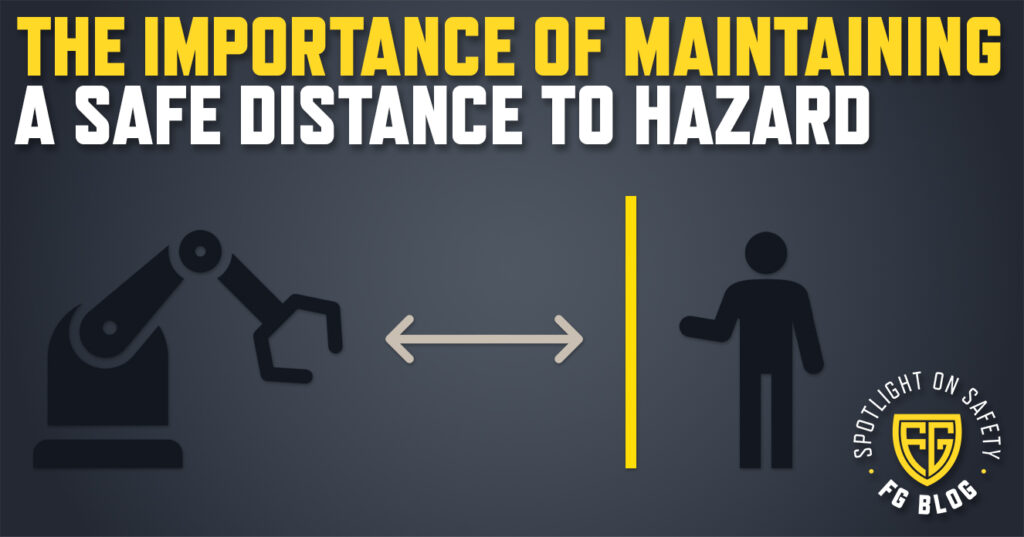The Importance of Maintaining a Safe Distance to Hazard

Distance to hazard is a common term in the manufacturing industry that refers to the distance between a barrier opening and a machine’s point of operation. In this month’s Spotlight on Safety, we’re going to discuss how to measure distance to hazard, and the best types of machine guarding to keep your employees safe in the workplace.
Machine Guarding: Protecting Your Staff
In a manufacturing facility, there are any number of machines moving and performing tasks at all hours of the day. These machines can’t safely perform their tasks without barriers around them; the absence of a protective barrier means that projectiles might launch onto the floor or employees could slip or trip onto a moving part or sharp edge.
That’s where machine guarding comes in.
There are several types of machine guards, including non-physical guards like light curtains, and barrier guards like the welded wire mesh guarding we make here at Folding Guard.
A light curtain does not block off a machine with a physical barrier, but rather a sensor that will stop the machine if someone or something interrupts the light beam.
In the case of a light curtain or a similar guard, distance to hazard would be calculated based on the distance from the light curtain’s sensor to the physical machine, and how long it would take for someone to get from that threshold to the hazard. This way the system can be programmed to halt the machine’s action before a person can reach it.
Barrier Guards vs. Pressure Sensors
Many manufacturers prefer barrier guards to pressure sensors, for a few reasons. A barrier guard can block projectiles in the case of a malfunction. Barrier guards can also be installed floor to ceiling, if necessary, protecting employees from hazards of all heights. A welded wire mesh machine barrier guard, like FG’s Saf-T-Fence® for instance, offers all the visual accessibility of an invisible guard like a light curtain, with more protection.
But where does “distance to hazard” come in? A welded wire mesh fence has openings built into it (which are important for visibility). These openings must comply with OSHA, ANSI, or ISO standards to prevent any person from reaching through the barrier to the machine, and possibly injuring themselves. This means the openings either have to be small enough, or the machine far enough, to prevent a person from getting even a finger through the fence and onto the machine.
The most common way to measure distance to hazard is with a guard opening scale, or “gotcha stick”. OSHA and ANSI have slightly different versions of these, but they accomplish the same goal: measuring a barrier guard’s openings to see how near or far a barrier can be installed relative to a machine. The scales themselves are designed with varying heights and lengths, starting smaller and shorter at the front and growing as the scale stretches back, to mimic a human hand and forearm.
Maximize Safety and Your Space
Some manufacturers hesitate to install barrier guards because distance to hazard requirements might mean that the barriers take up significant floor space. That’s why working with a company like Folding Guard to come up with a safety solution for your space is the best way to protect your employees and your inventory: you can discuss with your sales rep and design team the desired distance to hazard, and customize the openings of your mesh fencing to be small enough to install at a shorter distance to the machine.
Machine guards can also be installed with a safety switch in the doors that will shut off the machine when someone enters unexpectedly, similar to the reactive sensors of a light curtain.
Measuring and maintaining a safe and OSHA sanctioned distance to hazard is imperative for the safety of your employees. Be proactive about workplace safety and look into Folding Guard’s versatile machine guarding products today.
